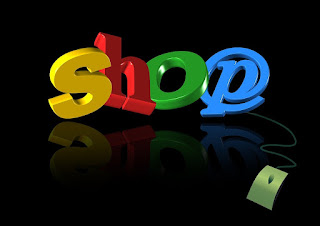How to Blog for Money on a Small Budget
Blogging is a popular way to share your passion, knowledge, and opinions with the world. It can also be a lucrative source of income if you know how to monetize your blog effectively. However, blogging is not a get-rich-quick scheme. It requires hard work, dedication, and investment. But what if you have a small budget and can’t afford to spend much on your blog? Is it still possible to blog for money and make a profit? The answer is yes, if you follow these tips:
Choose a Profitable Niche That You Love
One of the most important decisions you need to make as a blogger is what niche to focus on. Your niche is the topic or theme of your blog, and it determines what kind of content you create, who your audience is, and how you can monetize your blog. Choosing a profitable niche means finding a topic that has enough demand, competition, and potential for income. However, choosing a profitable niche is not enough. You also need to choose a niche that you love and are passionate about. This will help you stay motivated, produce quality content, and connect with your readers.
To find a profitable niche that you love, you can use tools like Keywords Explorerto research keywords related to your interests and see how popular and competitive they are. You can also look at other blogs in your niche and see how they are monetizing their content. Ideally, you want to find a niche that has high demand, low competition, and multiple ways to make money.
Use WordPress as Your Blogging Platform
Another crucial decision you need to make as a blogger is what platform to use for your blog. There are many options available, such as Blogger, Medium, Wix, Squarespace, etc. However, the best platform for blogging is WordPressWordPress is the most popular and powerful blogging platform in the world, powering over 60 million blogs. WordPress has many advantages over other platforms, such as:
- It’s free and open-source. You can download and install WordPress on your own web hosting account without paying any fees.
- It’s customizable and flexible. You can choose from thousands of themes and plugins to design and enhance your blog according to your needs and preferences.
- It’s SEO-friendly and secure. WordPress has built-in features that help you optimize your blog for search engines and protect it from hackers and malware.
- It’s easy to use and learn. WordPress has a user-friendly interface that lets you create and manage your blog without any coding skills. It also has a large community of users and developers who can help you with any questions or issues.
To use WordPress for your blog, you need two things: a domain name and a web hosting account. A domain name is the address of your blog on the internet, such as www.yourblog.com. A web hosting account is the space where your blog files are stored online.
Create Valuable Content That Solves Problems
The core of any successful blog is valuable content. Content is what attracts readers to your blog, engages them with your brand, and converts them into customers or subscribers. To create valuable content for your blog, you need to focus on solving problems for your audience. People use the internet to search for solutions to their problems, whether it’s how to learn a new skill, how to save money, how to improve their health, etc. If you can provide them with useful information that helps them solve their problems, they will trust you, like you, and follow you.
To create valuable content that solves problems for your audience, you need to:
- Know who your ideal reader is. You need to understand their needs, wants, goals, challenges, pain points, etc.
- Research what topics they are searching for. or Google Trends
Grow Your Email List from Day One
One of the most effective ways to monetize your blog is through email marketing. Email marketing is the process of sending emails to your subscribers with the purpose of building a relationship with them and promoting your products or services. Email marketing has many benefits over other forms of marketing, such as:
- It’s personal and direct. You can communicate with your subscribers on a one-to-one basis and tailor your messages to their interests and needs.
- It’s permission-based and loyal. You can only send emails to people who have given you their consent and have shown interest in your content.
- It’s measurable and profitable. You can track and analyze the performance of your email campaigns and see how they affect your revenue and ROI.
To start email marketing for your blog, you need to build an email list. An email list is a collection of email addresses of people who have subscribed to your blog or have opted-in to receive your emails. Building an email list is not easy, but it’s worth it. According to a study by DMA, email marketing has an average ROI of 4,300%. That means for every $1 you spend on email marketing, you can expect to earn $43 back.
To build an email list for your blog, you need to:
- Choose an email marketing service. You need a tool that allows you to collect, store, manage, and send emails to your subscribers. Some of the best email marketing services for bloggers are Mailchimp, ConvertKit, and AWeber.
- Create an opt-in form. You need a form that asks your visitors for their name and email address in exchange for something valuable, such as a free ebook, a cheat sheet, a webinar, etc. You can use tools like OptinMonster or Thrive Leads to create attractive and high-converting opt-in forms for your blog.
- Place your opt-in form strategically on your blog. You need to make sure that your opt-in form is visible and accessible to your visitors. You can place it on your homepage, sidebar, footer, header, pop-up, slide-in, etc.
- Drive traffic to your opt-in form. You need to promote your opt-in offer and get more people to see it and sign up for it. You can use various methods to drive traffic to your opt-in form, such as SEO, social media, guest posting, etc.
Monetize Your Blog with Multiple Income Streams
The final step to blog for money on a small budget is to monetize your blog with multiple income streams. Monetizing your blog means generating revenue from your blog content and traffic. There are many ways to monetize your blog, such as:
- Advertising. You can display ads on your blog and earn money every time someone clicks on them or views them. You can use platforms like Google Adsense or Mediavine to join ad networks and show relevant ads on your blog.
- Affiliate marketing. You can promote other people’s products or services on your blog and earn a commission every time someone buys them through your referral link. You can use platforms like Amazon Associates or ShareASale to join affiliate programs and find products or services related to your niche.
- Sponsored posts. You can write articles or reviews about a product or service that is relevant to your niche and get paid by the company or brand that sponsors them. You can use platforms like PayPerPost or IZEA to connect with sponsors and find opportunities for sponsored posts.
- Products or services. You can create and sell your own products or services on your blog, such as ebooks, courses, coaching, consulting, etc. You can use platforms like Gumroad or Teachable to create and sell digital products or services on your blog.
The key to monetizing your blog effectively is to diversify your income streams and choose the ones that suit your niche, audience, and goals. Don’t rely on one source of income alone, as it may not be stable or scalable. Experiment with different methods and see what works best for you.
Conclusion
Blogging for money on a small budget is possible if you follow these tips:
- Choose a profitable niche that you love
- Use WordPress as your blogging platform
- Create valuable content that solves problems
- Grow your email list from day one
- Monetize your blog with multiple income streams
Blogging is not easy, but it’s rewarding. If you’re passionate about your niche, willing to learn new skills, and persistent in your efforts, you can turn your blog into a profitable business.











